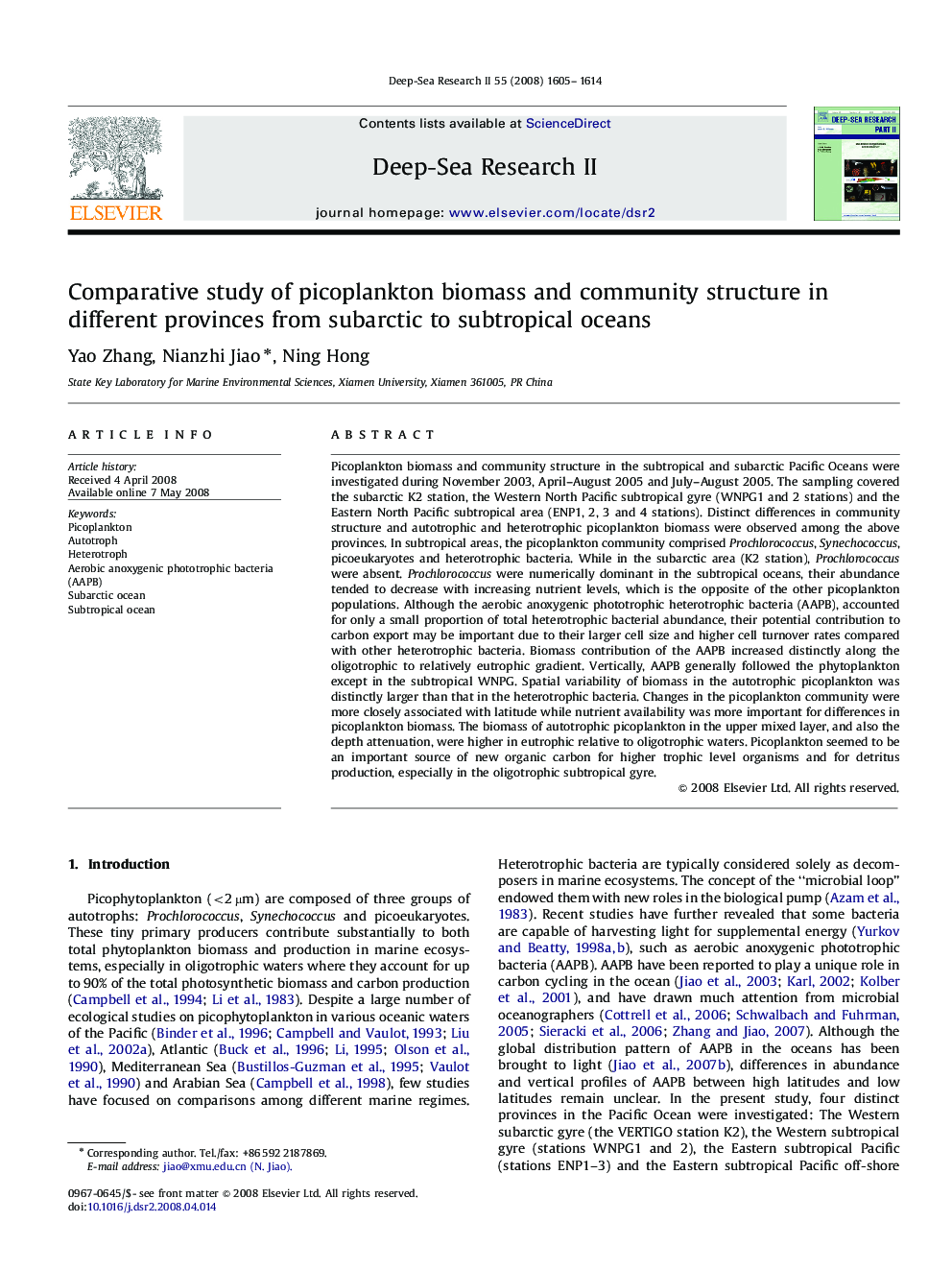| Article ID | Journal | Published Year | Pages | File Type |
|---|---|---|---|---|
| 4538023 | Deep Sea Research Part II: Topical Studies in Oceanography | 2008 | 10 Pages |
Picoplankton biomass and community structure in the subtropical and subarctic Pacific Oceans were investigated during November 2003, April–August 2005 and July–August 2005. The sampling covered the subarctic K2 station, the Western North Pacific subtropical gyre (WNPG1 and 2 stations) and the Eastern North Pacific subtropical area (ENP1, 2, 3 and 4 stations). Distinct differences in community structure and autotrophic and heterotrophic picoplankton biomass were observed among the above provinces. In subtropical areas, the picoplankton community comprised Prochlorococcus, Synechococcus, picoeukaryotes and heterotrophic bacteria. While in the subarctic area (K2 station), Prochlorococcus were absent. Prochlorococcus were numerically dominant in the subtropical oceans, their abundance tended to decrease with increasing nutrient levels, which is the opposite of the other picoplankton populations. Although the aerobic anoxygenic phototrophic heterotrophic bacteria (AAPB), accounted for only a small proportion of total heterotrophic bacterial abundance, their potential contribution to carbon export may be important due to their larger cell size and higher cell turnover rates compared with other heterotrophic bacteria. Biomass contribution of the AAPB increased distinctly along the oligotrophic to relatively eutrophic gradient. Vertically, AAPB generally followed the phytoplankton except in the subtropical WNPG. Spatial variability of biomass in the autotrophic picoplankton was distinctly larger than that in the heterotrophic bacteria. Changes in the picoplankton community were more closely associated with latitude while nutrient availability was more important for differences in picoplankton biomass. The biomass of autotrophic picoplankton in the upper mixed layer, and also the depth attenuation, were higher in eutrophic relative to oligotrophic waters. Picoplankton seemed to be an important source of new organic carbon for higher trophic level organisms and for detritus production, especially in the oligotrophic subtropical gyre.
